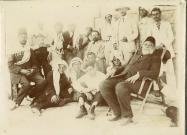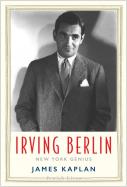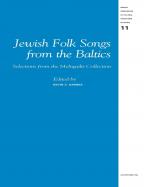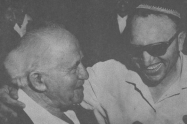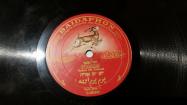(172 results found)
The Idelsohn Project
… as the history of Jewish music in schools, seminaries, synagogues, and universities derives directly from his major … of his autobiography written in Hebrew, English and German with added selections from the oral memoire of …
Avigdor (Tibor) Herzog
… of the entire liturgical cycle of the Spanish-Portuguese synagogue from London with the Reverend Eliezer Abinun (1912-1998) and the Southern German liturgical tradition from Cantor Avigdor Unna …
German Jewish Sacred Musical Intersections
… This project aims to map, analyze and make German Jewish liturgical music ( minhag Ashkenaz ) … practices within a broad European cultural context. The synagogue is conceived not only as a ritual space but also … that a new paradigm of Jewish liturgical music developed in German-speaking communities parallel to the gradual rise of …
Book review: James Kaplan, Irving Berlin: New York Genius
… of one of Berlin’s more mediocre works, “Oh, how that German Could Love”in Berlin’s own 1909 recording (xiii-xv). … no evidence that he ever in his life even stepped inside a synagogue. He married a Catholic and brought up his children …
Review essay: Kevin C. Karnes and Emilis Melngailis, Jewish Folk Songs from the Baltics
… which inhabited Latvia, namely, Jews, Roma, Russians, Germans, Lithuanians, Poles, Belarussians, Latgalians, … 1850s, decades after this practice was well established in Germany, but almost half a century before the first … Joseph A. 2001. “The Three-Part Selicha Mode,” Journal of Synagogue Music 28/1: 1–36 Nadel, Arno. 1923. Jüdische …
Bore ‘ad ana – A Dirge for the Ninth of Av and its Geographical Distribution
… Jerusalem, especially the maqam-oriented school of the Ades Synagogue of the Aleppan Jews. For many years, Nehemiah was cantor and preacher at the Zekhut Avot Synagogue in Jerusalem. He sang in a variety of languages … mostly (but not only) musical. This encounter between the German-born ethnomusicologist and her collaborator, the …
The Edith Gerson-Kiwi Legacy
… Comparative Musicology. Lachmann was also forced to leave Germany in 1936 and settled in Jerusalem. There he founded … musicology and Jewish music, and a mediator between German culture and scholarship and the nascent Israeli … of the Baghdadi Jewish community. The collection includes synagogue liturgy, life cycle songs, domestic rituals, and …
The Fall of Jerusalem in Song: The Ashkenazi Melody She’eh ne’esar
… that the “Western” melody, i.e. Sulzer’s, is similar to German folk melodies, some documented as early as the … (1932, p. xxxix), which also refers to other possible German sources for this melody. Idelsohn included “She’eh … es Hymnes, l es Psaumes e t l a Liturgie Complète d e l a Synagogue d es Temps l es p lus Reculés j usqu' a ̀ n os …
Stefanie Mockert
… Her studies focus on the liturgical music of Southern German Jews, bringing in an interdisciplinary perspective … “ From Berlin to Jerusalem and back - The letters of German-Jewish Musicologist Edith Gerson- Kiwi (1908-1992) ” … Transformation of Southern German Jewish Liturgy. The first Synagogue in Munich 1826-1887.” Mockert has received …
Yom Yom Odeh: Towards the Biography of a Hebrew Baidaphon Record
… of the above-mentioned repertoires. [3] Moreover, synagogue cantors, ḥazzanim, often tended to structure new … affiliations today (including my right to obtain a second German passport and travel freely between Israel and … which was supported by a doctoral studentship of the German National Academic Foundation and the Mildred Loss …



